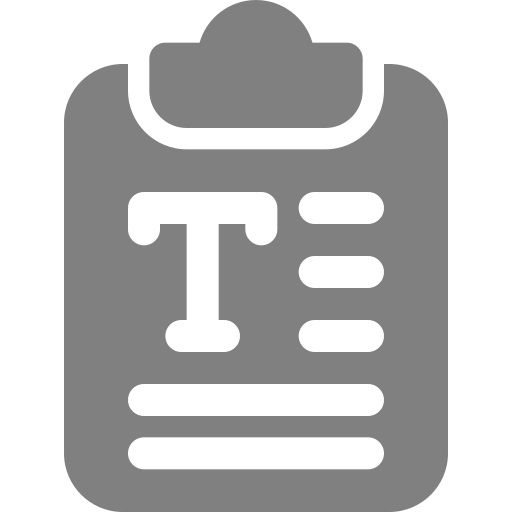 Overview
OverviewB.Tech. Aeronautical Engineering or Bachelor of Technology in Aeronautical Engineering is an undergraduate Aerospace engineering course. Aeronautical engineering is the primary branch of engineering behind the design, construction, and science of aircraft and spacecraft.
Aeronautical engineering covers all thing related to air specialties and rockets - from their design to development and science. it's sub-partitioned into two major branches, which additional or less covers each other: aeronautical engineering and astronautical engineering. Aeronautical engineering, for the most part offers with air crafts that stay inside the Earth's environment, astronautical engineering, on the other hand manages spacecraft working out of entryways of Earth's environment. Aeronautical Engineering is a standout among the most extreme fields of designing with an enormous extension for development. This discipline offers the change of new innovation in the field of aviation, space investigation and defense systems. It specifies in the Planning, Generation, Improvement, Looking at, Activity and Maintenance of each Commercial and Military Aircraft, Spacecraft's and their Segments and Satellites and Rockets.
 Courses & Eligibility
Courses & EligibilityThe eligibility criteria of Aeronautical Engineering are as follows:
 Course Curriculum
Course CurriculumB Tech program in Aeronautical Engineering is a 4 years program. These 4 years are divided into 8 semesters, each lasting for a duration of 6 months. Topics cover under each semester are as follows:
| Semester I Calculus and Solid Geometry Engineering Graphics Physics Engineering Chemistry & Environmental Studies Basic Electrical Engineering | Semester II Engineering Mathematics Basic Mechanical Engineering Basic Electronics Engineering & Information Technology Engineering Physics Engineering Mechanics Basic Civil Engineering | Semester III Engineering Mathematics II Fluid Mechanics Elements of Aeronautics Economics and Communication Skills Basic Thermodynamics Basic Strength of Materials |
| Semester IV Gas Dynamics Aerodynamics I Electrical technology & Machines Propulsion I Aircraft Structures I Engineering Mathematics III | Semester V Engineering Mathematics IV Computer Programming Aerodynamics II Principles of Management Flight Dynamics I Propulsion II | Semester VI Avionics Aircraft Structures II Theory of Vibration Experimental Aerodynamics Heat Transfer Elective I |
| Semester VII Computational Fluid Dynamics Aircraft design Aircraft systems and instrumentation Experimental stress analysis Flight dynamics II Elective II | Semester VIII Rockets Missiles Air transportation & Aircraft maintenance Elective III Elective IV Introduction to space technology Project |
 Career Prospect
Career ProspectThere are lots of organizations which select the Aeronautical Engineers. The work fields of the aeronautical engineers are turning into the more extensive with the developing innovation over the world. Not only you can get the job after completion of B.Tech. you could also be part of a Junior studies Fellow in leading research companies.
Some of the job posts are as the following:
 Pay & Remuneration
Pay & RemunerationFresher salary is generally between Rs.15000 to Rs. 30000 per month. This remuneration depends a lot on the quality of the Institute from which the Graduate has pursued the course as well as the profile of the employer. In the case of Government job, salary will be fixed, as per the pay band.
Aeronautical Engineers Jobs also are there in the defense sector, specifically the public sector DRDO, that comes below the ministry of defense. These engineering jobs offer the standard compensation as in another Public sector agency.
 Famous Personalities
Famous PersonalitiesThere are many persons who have made a mark in the field of Aeronautical Engineering. One of the Famous Personality's bibliography is as follows:
N.S. Prabhakar Naidu: The first batch of aeronautical engineers to graduate from the Madras Institute of Technology (MIT) in 1952, passed away in Seattle, u.s. on 6 August 2011. N.S. Prabhakar Naidu became an outstanding technocrat who innovative ideas that contributed to advanced aircraft design, performance, safety, and reliability.
Prabhakar Naidu had worked with renowned and reputed aircraft manufacturers such as Handley page in England in constructing the herald passenger aircraft structures, Beverly air freighters and Buccaneer naval jet combatants. He flight-tested the well known Folland Gnat jet opponents. He worked with short brothers in Ireland in which he was into flight-testing and performance-analyzing the Royal Air force's turbo fighter Belfast.
The Folland Gnat, developed for the Royal Airforce, became well called the mount for the RAF's Red Arrows aerobatic group and was first exported to Finland, Yugoslavia, and India. In later years, the Indian Airforce has become its largest operator and eventually manufactured the aircraft under license before developing Ajit, a modified and improved variation.
He worked with Boeing in Seattle in the US and generated the FAA approved performance Flight Manuals for the famous fleet of B727, B737, and the B747. these aircraft needed to be flight-tested prior to sale to commercial airlines.
He taught aircraft design and production at the MIT and effectively flight-tested the primary Sail aircraft designed in India by a group of students and team of workers of the MIT.
 Top Colleges in India
Top Colleges in IndiaThere are some top colleges for Aeronautical Engineering in India. they are given below:
| Top Colleges | |
| Indian Institute of Technology, Bombay Indian Institute of Technology, Kharagpur Indian Institute of Technology, Kanpur Indian Institute of Technology, Madras Indian Institute of Technology, Shibpur Madras Institute of Technology Academy of Aerospace & Aviation, Indore Institute of Aeronautical Engineering, Dehradun | Academy of Aviation & Engineering, Bangalore Academy of Aviation Engineering and Technology (AAET), Visakhapatnam, Andra PradeshAcharya Institute of Technology, Bangalore Aerospace Engineering & Research Organisation, Pune Ahmedabad Institute of Aeronautical Engineering & Information Technology, Ahmedabad Hindustan College Of Engineering, Tamil Nadu Hindustan Institute of Engineering Technology (H.I.E.T), Chennai |
 More Information
More InformationSome of the references books are as following:
 Top Recruiters
Top Recruiters